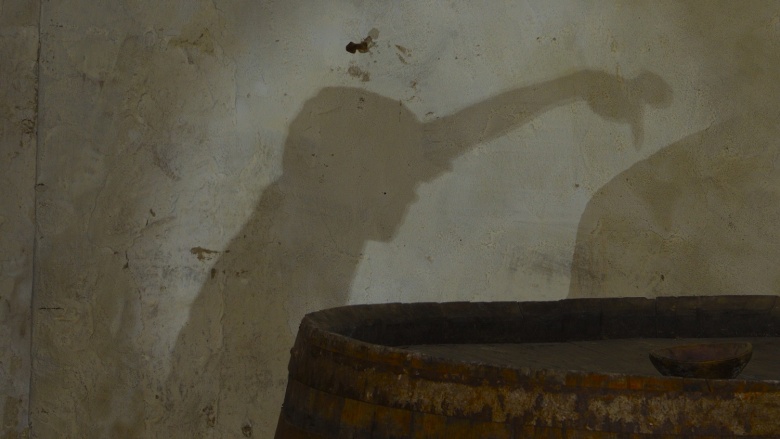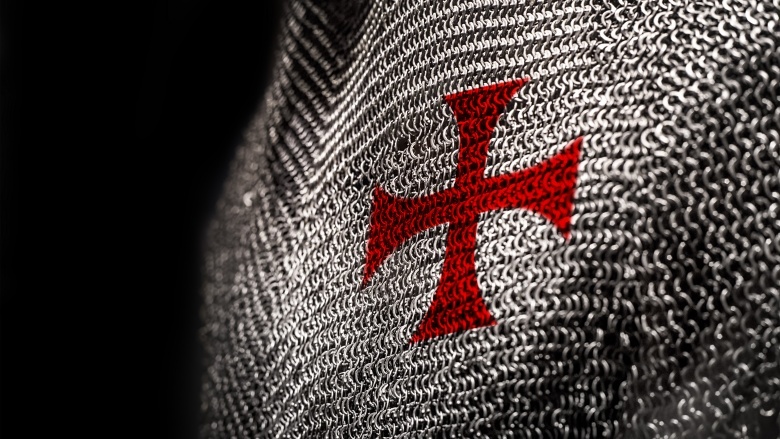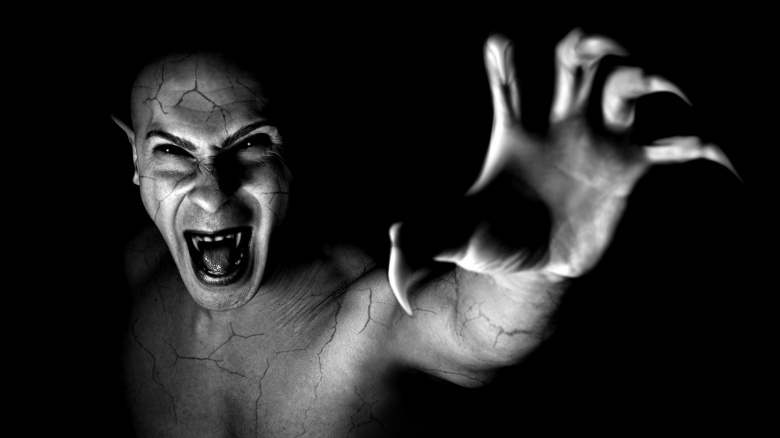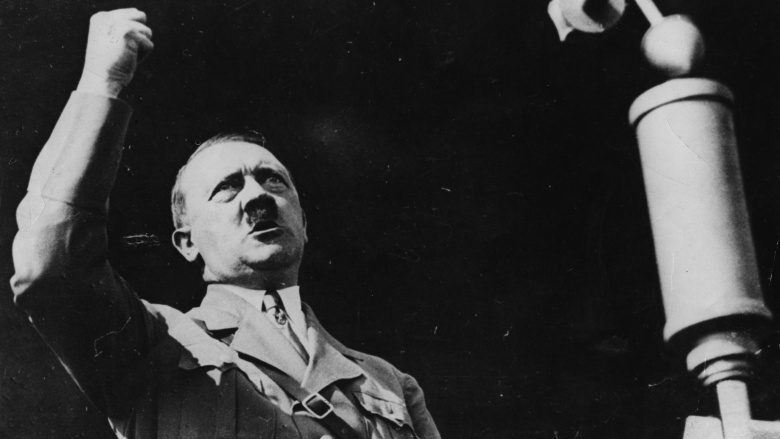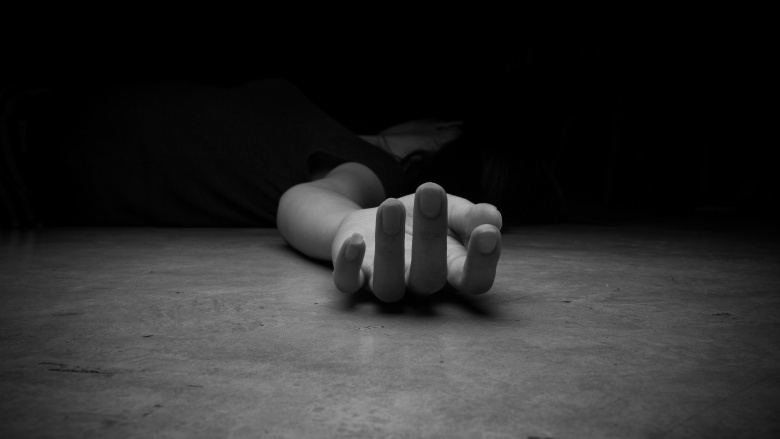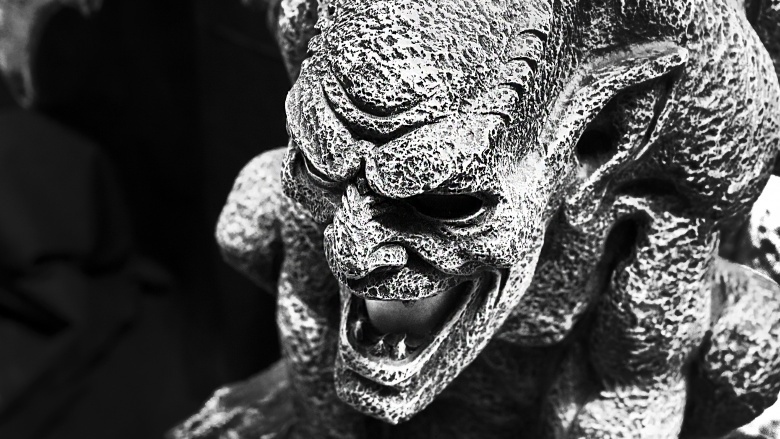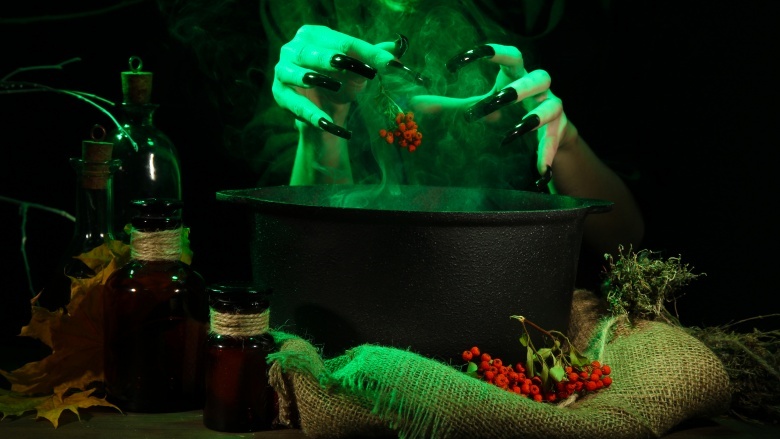Bizarre Instances Of Kids Suffering From Mass Hysteria
It's always disturbing when people break from reality or suffer from mass hysteria. However, it's especially eerie when it happens to a kid. After all, children are supposed to lead simple, innocent lives. But when kids freak out and start acting irrationally, things can spin out of control incredibly fast.
The Children's Crusades
During the Middle Ages, Europeans were hell-bent on conquering the Holy Lands, so they repeatedly sent soldiers to do battle with the Muslims. Most of the time, Crusaders were full-grown adults, but on two occasions, these armies were made up of kids ... sort of.
The first Children's Crusade started in 1212, when a young shepherd named Stephen of Cloves allegedly bumped into Jesus himself. Evidently, Jesus wanted Stephen to deliver a letter to the king of France. After sharing God's message, Stephen would lead an army to reclaim Jerusalem. As it turns out, Stephen was a pretty powerful speaker, because he convinced up to 30,000 people to join his crazy quest.
Now, most historians believe these Crusaders were mostly teenagers and young adults, not children. Nevertheless, this teenage army failed to impress the king, who ordered the kids to go home. That pretty much ended Stephen's crusade, although several of his followers headed to Germany where they joined up with a prophet named Nicholas. Like Stephen, Nicholas of Cologne was a young guy with the gift of gab. Thanks to his fire and brimstone sermons, he whipped up an army of 12,000 teenagers, who planned on marching over the Alps and into Italy. Then using his miraculous powers, Nicholas would part the Mediterranean, allowing his followers to march toward the Holy Lands. Needless to say, his scheme didn't pan out. Not only was the hike over the Alps incredibly grueling, but the damn sea just wouldn't cooperate.
According to some sources, a few of Nicholas's followers tried sailing to the Middle East, but diabolical seamen sold them into slavery. (Other sources claim this happened to Stephen's army.) Regardless, the Children's Crusades were totally ineffective, although the Encyclopedia Britannica claims they were possibly the first youth movements in European history.
The black angels of Lille
Back in the 17th century, there was a witch hiding under every rock. At least, that's how it seemed, anyway. People were constantly worried the Devil was going to show up, or some warlock might start cursing everyone for fun. That's probably why, in 1639, so many kids lost their minds when a creepy teacher started telling some truly disturbing stories.
The setting was an all-girls school in Lille, France, and the teacher in question was Antoinette Bourguignon. Now, Bourguignon wasn't exactly the teacher of the year — in fact, it's possible she was mentally disturbed. After all, she believed she was mentioned in the Book of Revelations. A mystic and religious nut, Bourguignon scared her students every day by telling them "little black angels" were constantly dancing around their heads. Eventually, one of the terrified students snapped, and ran for it. When she was brought back by the authorities, the girl claimed she was a witch. Soon, a grand total of 50 students said they were all in league with Satan, could slither through keyholes, fly on broomsticks, and had a bad habit of cannibalizing babies.
While religious authorities didn't believe their claims, the townsfolk wanted to burn the girls at the stake. Fortunately, people finally realized Bourguignon was the one at fault, although they suspected she'd bewitched the students. Realizing she was in danger, the teacher dressed up as a man, and made her great escape. She eventually ended up in a Prussian convent, where she became an influential religious writer, winning kooky converts in countries from France to Scotland.
The mystery illness of Le Roy, New York
In 2011, the town of Le Roy, New York, was turned upside down. Beginning in May, girls aged 12 to 18 suddenly came down with a mysterious illness. Their faces twitched, their heads jerked, and their arms flailed up and down. By February 2012, there were 18 victims at the local high school, one boy and 17 girls, plus a 36-year-old female nurse.
Doctors were puzzled by this strange sickness and, despite examinations, they couldn't find any signs of disease. People blamed everything from drugs to vaccines, and parents worried some bizarre virus was going around the school. Activists like Erin Brockovich believed there were environmental factors at play, but despite investigations, officials couldn't find any traces of toxins. All the while, the victims kept on twitching, twitching, and twitching.
Eventually, psychologists realized the girls were suffering from conversion disorder. Basically, when people experience "significant life stressors," sometimes the mind turns all that tension into actual physical symptoms. Occasionally, victims suffer from blindness or paralysis, and sometimes, they begin convulsing, just like the Le Roy students. Experts soon discovered many of the victims were experiencing pretty stressful situations, like their parents divorcing, or being estranged from relatives. As for the kids who weren't undergoing stress, one of the girls suffered from Tourette's Syndrome, so perhaps the other students were subconsciously copying her tics.
To be clear, the girls definitely weren't faking their ailments. These symptoms really were beyond their control. Unfortunately, some people refused to accept this psychological diagnosis. However, the patients who did come to grips with the reality of their situation improved much faster than their skeptical friends.
The Gorbals vampire incident
In Glasgow, Scotland, there's a cemetery called the Gorbals Necropolis, or the "City of the Dead." Established in the 1840s, the graveyard contains over 250,000 corpses. And one dark night in 1954, the cemetery was invaded by an army of vengeful kids.
On September 23, a constable named Alex Deeprose spotted hundreds of children swarming the graveyard. The kids were all 14 or younger, and most were armed with knives, clubs, and sharp sticks. One was even carrying a crucifix! Dumbstruck, the constable asked the kids what they were doing, and they matter-of-factly replied they were hunting a vampire. Evidently, this undead demon stood seven feet tall, possessed iron teeth, and had supposedly devoured two boys. The children wanted revenge, and they were scouring the cemetery for the bloodsucker.
Deeprose eventually dispersed the mob, and convinced worried parents there weren't actually any missing kids. But to Deeprose's dismay, the vampire hunters returned the next two nights, ready to do battle. Naturally, adults were distraught, and many blamed this vampire craze on American comic books. In fact, things got so serious, the British government made it illegal to sell certain comics to children.
Of course, no one knows for sure if a comic book even sparked the panic in the first place. Some historians claim the kids were likely terrified by the local legend of the murderous Iron Man, or perhaps they were scared by a passage from the Biblical Book of Daniel, describing an iron-fanged monster. Or, yeah, maybe the kids did read a copy of Dark Mysteries #15, a comic featuring a vampire with iron teeth. But whatever sparked their imaginations, the children eventually packed up their weapons and went home. As for the vampire, it was never heard from again.
The eye color experiment
Jane Elliott was an elementary school teacher in Riceville, Iowa, when in 1968, one of her third-grade students asked a pretty deep question. The kid wanted to know why someone had just shot Martin Luther King Jr. But instead of giving a simple answer, Elliott taught one of the most profound—and controversial—lessons in educational history.
Wanting to teach her kids about discrimination, she informed the students that brown-eyed people were superior to blue-eyed people. This was because melanin, the stuff that causes eye color, was the chemical responsible for intelligence. So if you had brown eyes, you were super -smart. On the flip side, if you had blue eyes, you were lazy, stupid, and shifty.
The brown-eyed students latched onto this idea, and were soon forming weird theories about how the world worked. When Elliott said blue-eyed kids had to use paper cups to drink from the water fountain, the brown-eyed students assumed it was because they had a disease. And when they noticed Elliott herself had blue eyes, they figured the school principal probably had a lot more melanin. The brown-eyed kids even began bullying their "inferior" classmates.
Eventually, Elliott flipped things, explaining blue-eyed children were actually far superior. Interestingly, the so-called "blueys" were much nicer to the brown-eyed outcasts, possibly because they knew what it was like to experience discrimination. While this experiment drew the ire of many Americans, others considered Elliott an educational pioneer. As a result, she appeared on TV alongside Johnny Carson and Oprah Winfrey, and she lectured to groups like the Navy, the IRS, and the White House Conference on Children and Youth.
The Robbers Cave experiment
In 1954, psychologist Muzafer Sherif wanted to know what caused people to form alliances, why societies competed against one another, and how rival groups could overcome prejudices. In order to answer his questions, he threw 22 boys into a real-world Lord of the Flies scenario.
When these kids arrived at Robbers Cave State Park in Oklahoma, they thought they were attending a summer camp. Before they showed up, the boys were split into two groups, and neither team knew about the other's existence. The groups were given separate cabins, and after a few days of making friends, the teams gave themselves cool names: the Eagles and the Rattlers, respectively. About a week into the experiment, the Eagles and the Rattlers finally bumped into each other, and almost immediately, they decided there wasn't enough room in camp for the both of them. When the Eagles and the Rattlers competed against each other in games like baseball or football, things devolved into shouting matches. The two groups regularly burned each other's flags, ransacked each other's cabins, and participated in angry food fights. On one occasion, the researchers barely managed to prevent a full-scale gang war.
Near the end of the experiment, Sherif began devising tasks to bring the groups together. For example, he stopped up the camp's water supply, forcing the Eagles and the Rattlers to work together to solve the problem. On another occasion, they all had to pitch in a few bucks to watch a particular movie. Eventually, most of the boys got along with one another, but for a few days there, it seemed like the Eagles and the Rattlers could've torn each other apart, especially if anyone introduced a conch shell.
The Third Wave experiment
In 1967, Ron Jones was the most popular teacher at Palo Alto's Cubberley High School. A history instructor with unorthodox methods, Jones believed in hands-on projects that would bring history to life. So when he decided to teach his tenth-grade class about the Nazis, things got really intense.
On Day #1 of his experiment, Jones had his class chant slogans like, "Strength through discipline, community, and action." He had them march into the classroom, sit at their desks with perfect posture, and stand whenever they called him "Mr. Jones." On the second day, Jones kicked things up a notch by coming up with a special salute (a raised arm with a cupped hand) for his new movement, the Third Wave. Soon, his students were preaching the Third Wave gospel across the school, recruiting new students, making signs, and passing out membership cards. But if kids didn't want to join, they were bullied into signing up. Things got even darker when Third Wave members formed their own secret police force. If anyone violated the group's rules, snitches would rat them out to the "cops," and there would be scary consequences.
Throughout the experiment, the students idolized Jones like a dictator, and some even acted as his bodyguards. Eventually Jones claimed the Third Wave was a countrywide movement involving hundreds of schools, and soon, the students would meet the party's leader. On the fifth day of the experiment, the students gathered in an auditorium where they expected to see their commander on TV ... only to be greeted with a slideshow about Hitler.
As Jones explained to the devastated students, "We're no better and no worse than the Germans we've been studying." However, his experiment didn't go over well with the parents or faculty, and Jones lost his job a few years later. He never worked as a teacher again, though his story was turned both a TV movie and a book, as well as a great cautionary tale concering how easily one can be led into accepting a dictatorship.
The Parker-Hulme murder
When 16-year-old Pauline Parker met 15-year-old Juliet Hulme, it was a match made in Heaven ... or Hell, depending on who you ask. The two girls both loved books and were obsessed with the same actors. They wanted to write novels together, and hoped to make movies based on their fantastical stories. And boy, did they have some crazy stories.
Evidently, the girls had created their own imaginary realm, an alternate dimension called "The Fourth World" they could supposedly visit from time to time. But things went in a dark direction for these BFFs (and possible lovers) when Hulme's parents filed for divorce. Mr. and Mrs. Hulme then decided to send their daughter to South Africa, but they said Parker could tag along if her mother gave the okay. However, the girls knew Hulme's mom, Honorah Rieper, would never give her permission, so the two concocted a killer plan.
On June 22, 1954, the teens ambushed the older woman, beating her repeatedly with a brick inside a stocking. After murdering her, the two girls claimed Rieper had fallen to her death, but the multiple wounds indicated otherwise. The girls were sentenced to a little over five years behind bars, in separate institutions. A psychologist at the time concluded they were suffering from paranoia, attachment anxiety, and narcissism, while another psychiatrist said the girls believed they were "superior beings living in a world of their own creation."
After they were released in 1959, the women changed their names, and supposedly never met again. Parker became Hilary Nathan and worked as a teacher. Hulme changed her name to Anne Perry and became a popular author of detective stories, selling over 25 million books about murder.
The home of 200 demons
In November 2011, Latoya Ammons moved into a rental home in Gary, Indiana. She brought along her mother and three young kids, but shortly after settling in, the family found themselves facing the legions of Hell.
In December, Ammons claimed swarms of flies appeared on her porch. The grandmother later saw a shadowy figure walking through the house. Soon, doors were slamming shut, objects were flying around, and the kids were exhibiting strange symptoms. In March 2012, the Ammons' 12-year-old daughter allegedly levitated above her bed. One of the boys was also thrown across the house. Even worse, two clairvoyants explained there were over 200 demons in the home.
Worried for her children, Ammons took the kids to several churches for protection, erected an altar in her basement, and set up several religious shrines. But despite her best efforts, the kids started showing signs of demonic possession. Creepier still, multiple witnesses saw the kids flash evil smiles, roll their eyes into their heads, and speak in deep voices. The youngest boy even tried to strangle his brother while shouting, "It's time to die." Medical staff at the local hospital saw the seven-year-old son fly across a room, and two credible witnesses watched as the nine-year-old walked backwards up a wall.
The children were removed from Ammons for six months, as psychologists tried to figure out what was happening. It was soon determined the kids were being encouraged by their mom's beliefs, and were playing into her story. The seven-year-old probably launched himself across the room. When the nine-year-old climbed up the wall, he was holding both of his grandmother's hands, so he had plenty of support. It's even possible the daughter faked levitation by throwing herself into the air and arching her back. Plus, anyone who's ever watched a horror movie knows how to fake a possession. Still, in November 2012, the children were reunited with their mom, and the family left their haunted home for good.
The Paisley witches
In 1696, an 11-year-old Scottish girl named Christian Shaw came down with a peculiar illness. She suffered from intense seizures, screamed in the night, and vomited objects like eggshells, hairpins, and bones. Freaked out, her parents took Shaw to see a respected physician, and according to the doctor, the girl was possessed.
His theory made sense, especially because Shaw claimed she'd been cursed. According to the girl, she'd caught a servant stealing milk from the family kitchen. Shaw threatened to report the woman, so the servant asked the Devil to drag Shaw's "soul through Hell." Since that day, the girl was in constant pain, even spitting up clumps of gravel. As she writhed in bed, Shaw shouted out a list of names, claiming these were the people who were tormenting her.
Furious, Shaw's father demanded local authorities arrest the alleged witches. By January 1697, over 30 people had been locked up. After some intense interrogations, most of the prisoners were freed, but seven were sent to stand trial in the town of Paisley. Many people took the witness stand to accuse the group of witchcraft, and soon, the seven citizens were sentenced to death. One of the so-called witches committed suicide before his execution, but the other six were hanged, and their remains were burned.
As for Shaw, she grew up to marry a wealthy man, and started a thriving thread industry. But in 1839, two historians searching Shaw's childhood home found a mysterious hole in her bedroom wall ... right where her bed would've been. It seems someone had been passing objects—like hairpins and eggshells—through the wall so Shaw could carry on her act. But who helped her? And why would Shaw commit such a horrible crime that ultimately took seven completely innocent lives? It seems those answers are lost to time.
